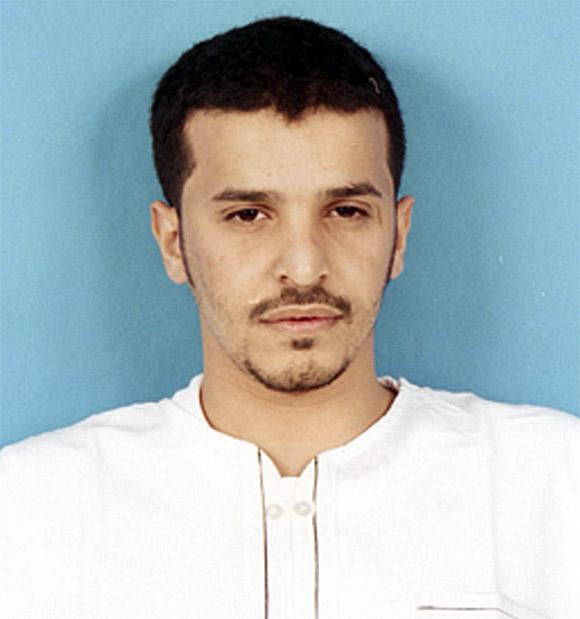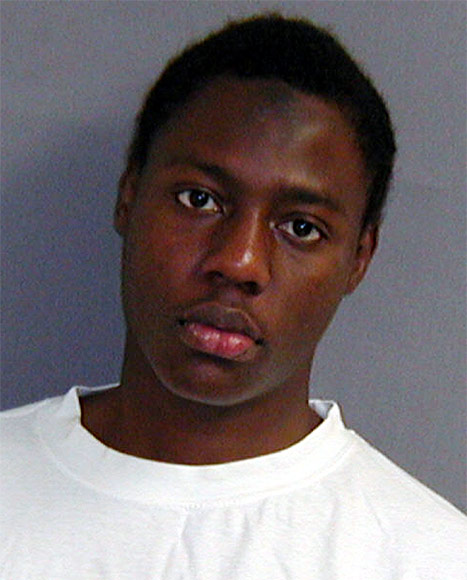 | « Back to article | Print this article |
The 'Evil Genius' behind Al Qaeda's underwear bombs
Running a clandestine bomb factory in remote area in Yemen, a nondescript Saudi has emerged as the most potent threat to the United States, making three bids in past three years to spread mayhem in the world's most powerful nation.
His explosive devices are becoming increasingly sophisticated and hard-to-detect for Americans counter-intelligence forces, who have now marked him as the nation's most wanted.
Ibrahim Hassan al-Asiri has emerged as the Central Investigation Agency's worst nightmare since the slaying of terror chief Osama bin Laden and has now become a major focus of America's anti-terrorism efforts, CNN reported quoting US intelligence officials.
Asiri, 30, who hails from middle class Saudi family, US intelligence agency say is the top bomb maker for Al Qaeda's Yemeni branch whom they now call 'Evil Genius'.
Click NEXT to read further...
The 'Evil Genius' behind Al Qaeda's underwear bombs
US officials have said Asiri built the bomb in the attempts to bring down a commercial flight near c and two cargo planes headed for the US. His latest bomb, part of Wednesday's foiled plot, appear to be the most sophisticated and a modification of his underwear bomb, which caused ripples in American law enforcement agencies.
With the death of Osama bin Laden, Asiri is a key reason that US officials consider Yemen's Al Qaeda in the Arabian Peninsula, to be one of the most significant threats to the American homeland.
"He is highly determined and fully committed to attack America," according to Arab security experts.
Over the past year, AQAP has taken advantage of Yemen's political turmoil and seized large swaths of territory in the south. Yemen's government and the Obama administration have responded with aerial assaults and drone strikes, targeting Asiri and other top operatives of AQAP.
The 'Evil Genius' behind Al Qaeda's underwear bombs
Asiri built the "underwear" bomb worn by Umar Farouk Abdulmutallab when he tried to blow up a Northwest Airlines flight headed to Detroit on Christmas Day in 2009. A year later, Asiri built the printer-cartridge bombs that Al Qaeda placed on Fedex and UPS planes destined for Chicago.
If it were not for a technical problem (Abdulmutallab's device failed to detonate), Asiri would have succeeded in staging a catastrophic disaster in American skies.
"Ibrahim al-Asiri is the one who enabled the operations of Al Qaeda in Yemen to move from local attacks to international ones," said Said Obaid, the Yemeni author of a book about AQAP.
Asiri studied chemistry in Riyadh, but when the US invaded Iraq in 2003, he became more radicalised, like thousands in the Arab world. He tried to join the Al Qaeda in Iraq to fight the US occupation but was arrested by Saudi authorities as he tried to cross the border. He was imprisoned for nine months and released.
The 'Evil Genius' behind Al Qaeda's underwear bombs
Soon after, according to Saudi officials, he and Abdullah launched a militant cell linked to the Al Qaeda wing in Saudi Arabia to plot attacks against oil pipelines, the royal family and security services. He was placed on the kingdom's most-wanted list of Al Qaeda terrorists.
By 2007, when Al Qaeda's Yemen and Saudi branches merged to create AQAP, Asiri and his brother had crossed into Yemen.
There, Asiri learned to make bombs. Some analysts say he was probably taught by a Pakistani bomb maker linked to Al Qaeda. Other analysts say Asiri appears to have taught himself, through manuals and other resources on the Internet.
"He seems to be largely self-educated," said Bruce Riedel, a former CIA officer who is a senior fellow at the Brookings Institution. "He has been able to miniaturise bombs so they are capable of being smuggled."
Asiri's brother became his first experiment. Their target was Prince Mohammed bin Nayef, Saudi Arabia's counterterrorism chief.
Asiri crossed the border and gained entry to Nayef's palace by claiming he was defecting. But the explosion that killed Asiri only slightly wounded Nayef. Nonetheless, AQAP was emboldened. The group had never come so close to killing a member of the royal family.
The 'Evil Genius' behind Al Qaeda's underwear bombs
With his brother dead, Asiri's credentials in AQAP soared, Obaid said. Soon he was plotting his next attack, with Abdulmutallab, a Nigerian student he was introduced to by Anwar al-Awlaki, the US-born cleric who was killed in an American drone strike last year. Asiri was initially thought to have died in the same strike.
A Justice Department sentencing memo from February in the Abdulmutallab case describes Asiri as having the Nigerian "practice the manner in which the bomb would be detonated; that is, by pushing the plunger of a syringe, causing two chemicals to mix, and initiating a fire (which would then detonate the explosive)."
In 2010, Asiri created even more sophisticated bombs, this time inside printer cartridges. They passed undetected through airport security. It took authorities in Dubai and Britain nine inspections before they found the devices. In March 2011, the Obama administration designated Asiri as a wanted terrorist.
Riedel said people he spoke to who examined the Detroit and cargo plane bombs said they show "learning and adaptation." The most recent attempt, using no metal, was a further refinement to evade airport security scanners, Obaid said.
"Al-Qaeda consider him a treasure that cannot be lost," he said.
TOP photo features of the week
Click on MORE to see another set of PHOTO features...





